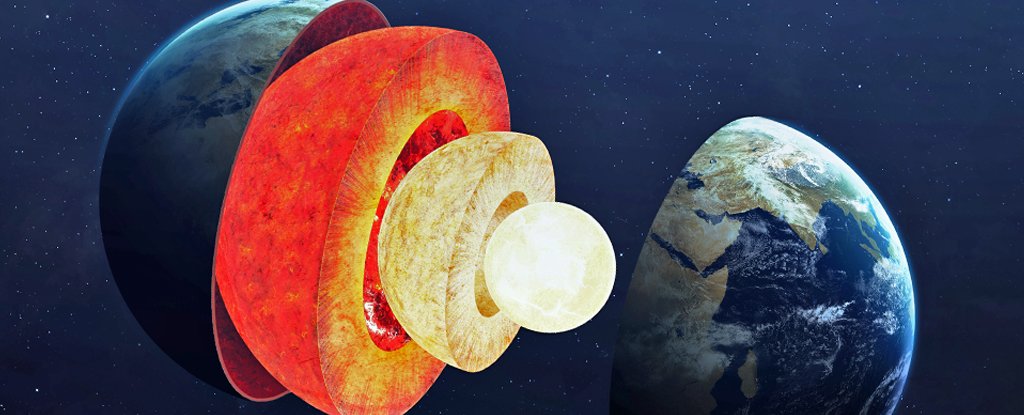ARTICLE AD
The “Devil Comet,” known formally as Comet 12P/Pons-Brooks, is set for a rare conjunction alongside the Great North American Total Solar Eclipse on April 8. For skywatchers, this raises the tantalizing prospect of capturing a highly unusual alignment, but it’s not yet certain if the comet will be visible to the unaided eye during the day, even at the height of the eclipse.
How Important Was it for Jason Reitman to be a Part of Ghostbusters: Frozen Empire?
A dirty snowball, as the late Harvard astronomer Fred Whipple referred to comets, is currently traveling through our cosmic backyard. Known as 12P/Pons-Brooks, the comet will reach perihelion—its closest approach to the Sun—on April 21 (when it’ll likely be at its brightest) and will make its closest approach to Earth on June 2 (when it’ll be on its outbound trajectory). Blazed by the heat of our Sun, Pons-Brooks is becoming increasingly active, presenting a captivating spectacle for astrophotographers.
Comet Pons-Brooks has an orbital period of 71.3 years; it doesn’t come by very often. Designated a Halley-type comet—a term reserved for comets that orbit the Sun once every 20 to 200 years—it was first discovered by French astronomer Jean-Louis Pons in 1812 and then again by British-American astronomer William Robert Brooks in 1883. Its nucleus is estimated to be around 20 miles (32 kilometers) wide.
Prone to outbursts
Pons-Brooks has undergone several outbursts since its first tantrum on July 20, 2023. The outburst, which caused its brightness to increase a hundredfold, “struck awe in all of us because it was so intense and produced a weird shape,” Ariel Graykowski, a postdoctoral fellow at the SETI institute, said in an email. “As the dust from the outburst expanded, it looked like the shape of the Millennium Falcon.”
This also gave it a distinctly horn-like shape, earning it the nickname “Devil Comet.” These shapes are “likely due to a shadow cast on the coma [the fuzzy cloud that surrounds an active comet] by the nucleus itself,” Graykowski said, adding that a bunch of outbursts have happened since then, including a recent one on March 1.
How to catch the comet
Excitingly, Pons-Brooks is set to become even more active in the coming weeks, potentially making it visible to the naked eye with a maximum brightness magnitude around 4.0, according to Graykowski. “The limit for naked eye objects in dark, moonless skies is around 6 magnitudes,” she said, so “it won’t be super obvious in the sky—you will have to know where to look, and you’ll want to get out of the city and into a dark sky.” In astronomy, the lower the magnitude, the brighter the appearance.

Comet 12P/Pons-Brooks as it appeared from Italy on March 14.Image: Virtual Telescope Project 2.0
Observers in the Northern Hemisphere can currently spot Pons-Brooks in the early evening inside the Pisces constellation, situated in the low northwestern sky. There’s a good chance Pons-Brooks will be even brighter around perihelion should it experience another big outburst, with the comet likely remaining visible until early May.
“Comets are fuzzy, extended objects—they aren’t concentrated dots like stars, and that can make them hard to identify with the naked eye,” Graykowski explained. “Right now, it is barely visible to the naked eye in very dark skies and will get brighter as it approaches perihelion.” She recommends using binoculars or a telescope before trying to see it through unaided eyes, and says that skywatchers should let their eyes adjust to the darkness for around 20 to 30 minutes.
The comet meets the eclipse
The total solar eclipse on April 8 offers—possibly—a unique opportunity to witness two remarkable celestial events at the same time. The level of darkness during the eclipse will vary according to geography and local conditions, but it could be substantial enough to reveal Jupiter and Venus and possibly even stars during the period of totality.
Astrophotographers might be able to capture Pons-Brooks alongside the eclipsed Sun, as the two objects perform their celestial rendezvous. This presents a big challenge, requiring sufficiently darkened skies, skill, and nerves of steel.
As Graykowski explains, Pons-Brooks will be near the Sun, about 25 degrees away, during the eclipse, and “therefore can be observed during the eclipse if you are in the path of totality.” That said, “you still will still need binoculars or a telescope, unless the comet ends up being brighter than current estimates,” she added. As for the comet being visible during totality, that seems unlikely but not impossible, given the need for super-dark skies.
See you in 2097
At perihelion, Pons-Brooks will be about 0.78 astronomical units (AU) from the Sun (an AU is the average distance between the Earth and the Sun, about 93 million miles). At its farthest point, aphelion, the comet will be within 17.2 AU of the Sun. That’ll happen in the year 2059, at which point the comet will turn around and begin its journey back toward the inner solar system, with its next solar rendezvous in 2097.
More: The Upcoming Total Solar Eclipse Is Totally Stressing Me Out

 9 months ago
61
9 months ago
61 

